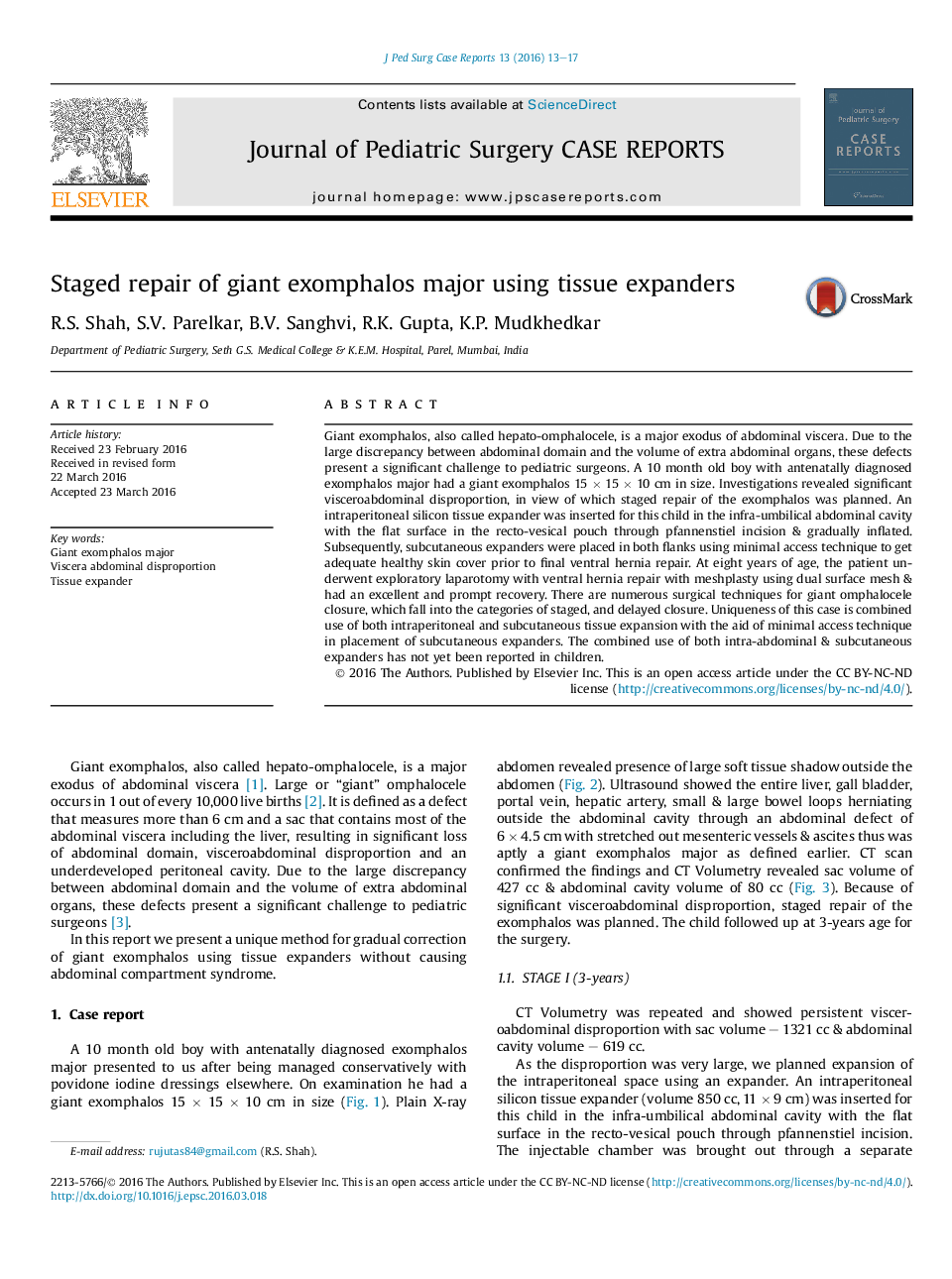| کد مقاله | کد نشریه | سال انتشار | مقاله انگلیسی | نسخه تمام متن |
|---|---|---|---|---|
| 4161038 | 1607120 | 2016 | 5 صفحه PDF | دانلود رایگان |
• Giant exomphalos, (hepato-omphalocele) is a major exodus of abdominal viscera with a defect that measures more than 6 cm and a sac that contains most of the abdominal viscera including the liver, resulting in significant loss of abdominal domain, visceroabdominal disproportion and an underdeveloped peritoneal cavity.
• A 10 month old boy with antenatally diagnosed exomphalos major was managed successfully using tissue expanders without causing abdominal compartment syndrome. The main challenges in our case were discrepancy of more than 700 cc between abdominal cavity and exomphalos sac, the entire liver as the main content, and the need to increase the abdominal cavity volume to accommodate structures within the exomphalos sac without causing abdominal compartment syndrome.
• Intraperitoneal placement of tissue expander of adequate volume and its gradual expansion increased the volume of abdominal cavity as well as use of subcutaneous expanders helped in obtaining healthy skin cover in our case. Uniqueness of this case is combined use of both intraperitoneal and subcutaneous tissue expansion with the aid of minimal access technique in placement of subcutaneous expanders. The combined use of both intra-abdominal & subcutaneous expanders has not yet been reported in children.
Giant exomphalos, also called hepato-omphalocele, is a major exodus of abdominal viscera. Due to the large discrepancy between abdominal domain and the volume of extra abdominal organs, these defects present a significant challenge to pediatric surgeons. A 10 month old boy with antenatally diagnosed exomphalos major had a giant exomphalos 15 × 15 × 10 cm in size. Investigations revealed significant visceroabdominal disproportion, in view of which staged repair of the exomphalos was planned. An intraperitoneal silicon tissue expander was inserted for this child in the infra-umbilical abdominal cavity with the flat surface in the recto-vesical pouch through pfannenstiel incision & gradually inflated. Subsequently, subcutaneous expanders were placed in both flanks using minimal access technique to get adequate healthy skin cover prior to final ventral hernia repair. At eight years of age, the patient underwent exploratory laparotomy with ventral hernia repair with meshplasty using dual surface mesh & had an excellent and prompt recovery. There are numerous surgical techniques for giant omphalocele closure, which fall into the categories of staged, and delayed closure. Uniqueness of this case is combined use of both intraperitoneal and subcutaneous tissue expansion with the aid of minimal access technique in placement of subcutaneous expanders. The combined use of both intra-abdominal & subcutaneous expanders has not yet been reported in children.
Journal: Journal of Pediatric Surgery Case Reports - Volume 13, October 2016, Pages 13–17
